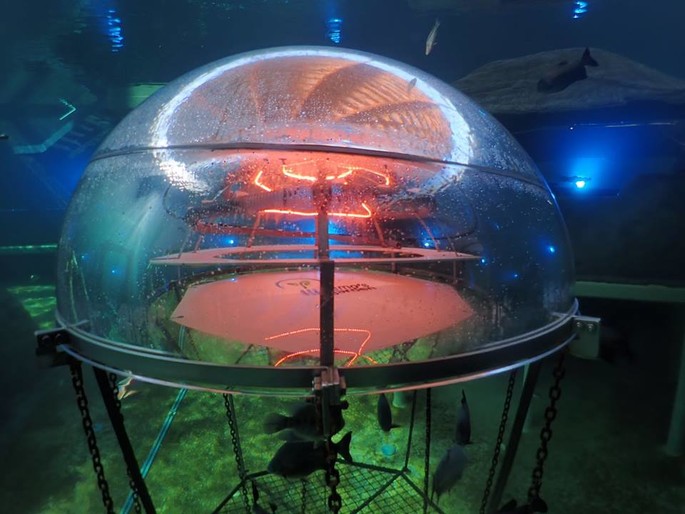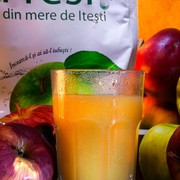The idea
In the summer of 2012, Sergio Gamberini, founder of diving equipment firm Ocean Reef Group, was enjoying a seaside vacation on the Italian Riviera. Resting in between dives, he enjoyed strolling along the edge of the sea chatting with friends.
One day, the conversation veered to his other passion: gardening.
Would it be possible, he wondered, to create the perfect growing conditions for basil, the most popular local herb and an essential ingredient for pesto?
Like most herbs, basil prefers protected, sunny locations with well-drained soils and a constant, stable temperature.
Glancing at the sea, Gamberini was struck with an unusual idea: why not try to grow basil underwater? Bizarre as it might have seemed, the idea made perfect sense coming from a diving aficionado and innovation-minded entrepreneur. In fact, it would have allowed Mr. Gamberini to combine two of his passions: scuba diving and gardening. He made a couple of phone calls and, with the help of his team at Ocean Reef Group, started experimenting, sinking transparent biospheres 20 feet below the surface of the sea and filling them with air.
The project's goal
The project’s goal was initially a provocation, but suddenly turned in something more ambitious:create an alternative system of agriculture, especially dedicated to those areas where environmental conditions, economical or morphologic reasons make plants growth extremely difficult.
Nemo’s Garden’s aims to create a system that utilizes natural resources already available, the foremost important one being the oceans and other bodies of water.
Key facts
Nemo’s Garden Project may be described with two keywords:
Self-sustainable
Nemo's Garden is not only a technological endeavor, aimed at making underwater farming an economically viable, long-term alternative form of agriculture, but most and foremost it is an eco-friendly and self-sustainable project.
The use of renewable energy harnessed from the sun and of fresh water obtained by desalination of seawater, in fact, make Nemo's Garden a self-sustainable system.
The microclimate and thermal conditions within the biospheres are optimal for plant growth and crop yields, not unlike a conventional greenhouse, yet it requires no additional energy sources.
Eco-friendly
The underwater farm determines very minimal, if none, interaction with the marine environment and related ecosystems, exception made for a positive shelter-like effect in order to support the repopulation for the surrounding marine areas.
A new environment for botanical research and further opportunities
The interest and seriousness of the project has drawn attention to the research side as well. Nemo’s Garden has already been rented to pharmaceutical companies willing to explore this alternative solution in growing plants. These companies believe, like us, that plants grown underwater may unveil interesting discoveries for the future.
“Every year, we are discovering new possible applications for the biospheres,” said Gianni Fontanesi, project coordinator at Nemo’s Garden.
These include eco tourism, fish farming, seaweed farming, or as scientific research labs or underwater stations for monitoring wildlife, scientific research, etc.
The simple fact of being able to draw from Ocean Reef's strong research and development expertise was surely of great help, and so was being able to use a wide array of equipment designed for a richer and more natural diving experience.
Conversely, Nemo's Garden soon became a place for experimenting or for testing new equipment under development.
Today, in fact, many beta tests are conducted at Nemo's Garden, which thus serves as an expansion of our Innovation Center and represents perhaps the highest expression of our commitment to research.
The habitat
Our underwater farm is composed of 6 air-filled clear plastic pods, anchored to the bottom of the sea by chains and screws, just off the coast of Noli, Italy.
Continuous monitoring and
communication
Each biosphere is equipped with sensors for CO2, O2, humidity, air temperature and illumination. The external water temperature is checked in the shallower and deeper biospheres.
The control tower
Built on the shoreline, the Control Tower allows to supervise the functioning of Nemo’s Garden. It is equipped with an ultrasonic surface communication system (used to stay constantly in contact with divers operating underwater), and a full duplex intercom communication system (that allows to communicate with the divers when they get inside the biospheres).
Hydroponic culture in the biospheres
Our greenhouse gardening is mostly hydroponic-based. Growing plants hydroponically means that they are grown without soil in a controlled environment, instead using a nutrient-rich solution to deliver water and minerals to their roots.
More info: www.nemosgarden.com























